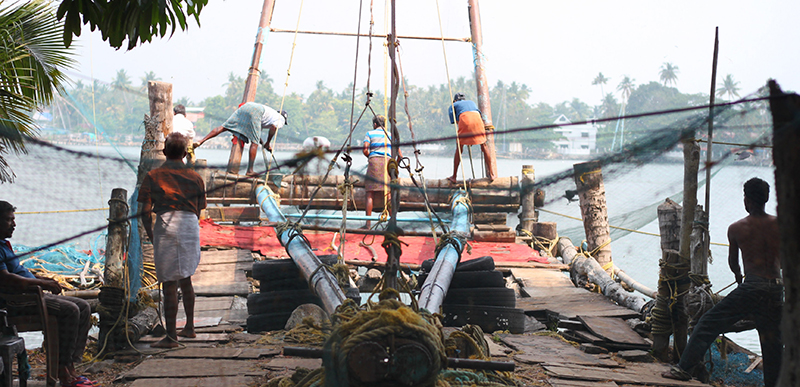Blog
Advancing social mobility research: Where to start
Innovation in academic investigation and policy response is critical to addressing global challenges. That is why the most recent Nobel Prize in Economics was awarded for methodological contributions that advanced new areas of inquiry in labour economics. This rationale recognizes the key role of methodological innovations in the social sciences.
Innovation can also come from advancing a more nuanced view of old problems in novel settings. Currently, much of the empirical academic literature in the social sciences is disproportionately focused on the Global North, with the unfortunate consequence that empirical findings on countries in those regions are often assumed to apply to the rest of the world. However, there are important differences between what is true or relevant in the Global North and what is useful or urgent in the developing world.
The new book Social Mobility in Developing Countries: Concepts, Methods and Determinants responds to this disconnect in the study of social stratification and intergenerational mobility.
Social mobility studies: limits to date
The literature on social mobility consistently demonstrates a positive correlation between the socioeconomic status of parents and that of their adult offspring. This is true for every society for which we have data and across several measures of status (e.g. labour market earnings, total market income, welfare receipts, educational attainments, etc.).
This vast international evidence has allowed researchers and policymakers to identify a number of ‘stylized facts’ that help explain the observed variation in mobility levels across and within countries. However, most of these stylized facts are derived from empirical analyses of high-income countries.
In my chapter for the new book, I note that a relatively small share of the world population currently lives and works in high-income countries, which raises the natural question of whether the findings from these regions can easily be extended to the much larger pool of the world population living in the emerging economies.
I present this situation as an opportunity for the application of new approaches to research. It is an attempt to stimulate novel contributions that can help reduce the gap in the literature. The whole volume explores potential avenues for understanding social mobility in understudied contexts, perhaps with limited data, and untested theories that may be more applicable. It ultimately offers a more complete picture of social mobility across the globe.
Moving beyond the standard model of intergenerational mobility
The seminal intergenerational mobility model developed in the second half of the last century — alongside its subsequent adaptations and extensions — has helped explain the drivers of intergenerational income mobility around the world. In addition to the widely accepted drivers established by the standard model (e.g., inherited family attributes, parental investments in children’s human capital, and credit market failures) other factors may be of particular importance for social mobility in developing economies.
Consider for example the domain of labour markets. Standard mobility models implicitly assume a unitary labour market where skills are equally rewarded across sectors. I argue that this assumption is less realistic in the context of developing countries, where labour markets are often segmented and workers with similar human capital and skills can earn significantly different wages depending on the sector of their employment.
Additionally, I summarize existing evidence to show that one’s capacity to access different labour market segments is strongly correlated with family background, which hinders mobility across sectors in developing countries.
Labour markets in developing economies also face significant ‘frictions’. These consist of a variety of barriers to employment, which include imperfect information on available job vacancies and uncertainty around workers’ skills, as well as geographical constraints to labour mobility. These misalignments may affect the selection of employees and the wage of employed workers, contributing to decreasing mobility in low- and middle-income countries.

Parents in the Global South may also be less informed about the future returns to the education of their children, which may result in underinvestment in their human capital and fewer employment opportunities.
I also review evidence suggesting that credit constraints play a larger role in emerging economies. In the context of less-developed credit markets, children at the bottom of the income distribution may have a lower chance of upward mobility compared to their counterparts in advanced economies, as a result of credit rationing for high-ability children from low socioeconomic backgrounds.
Similarly, due to significant earnings volatility and imperfect insurance against shocks, many households from developing countries are more risk-averse, therefore underinvesting in the education of their children.
These and other unique circumstances in the Global South are promising avenues for future research on social mobility. In some cases, the state of the art from the North can lay the foundation for such research. For example, the wave of recent studies on the ‘geography of mobility’ in high-income countries can be replicated in parts of the developing world, where data allows. This approach could be coupled with a more narrowly focused investigation of various barriers to sectoral, geographical, and occupational mobility to understand the unique impacts of labour market segmentation on mobility in specific contexts.
Overall, there is a need for more innovative research approaches that consider the specific features of the labour, credit, and insurance markets in developing countries. These context-specific extensions of the basic model can help policy makers more effectively design interventions that can level the economic playing field.
Patrizio Piraino is an applied microeconomist with a research focus on social mobility and the mechanisms of social exclusion. He is Associate Professor at the Keough School of Global Affairs at the University of Notre Dame and the Director of the Ford Program in Human Development Studies and Solidarity at the Kellogg Institute for International Studies.
He is the author of a chapter in the volume Social Mobility in the Global South: Concepts, Methods, and Determinants
The views expressed in this piece are those of the authors, and do not necessarily reflect the views of the Institute or the United Nations University, nor the programme/project donors.
 Join the network
Join the network





